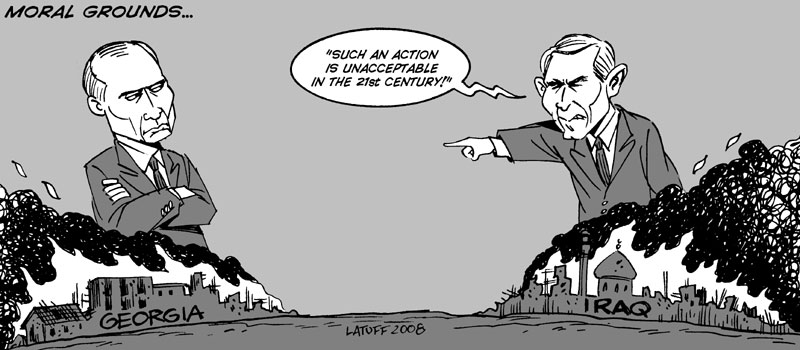A Major War: Not Just Rumors
by Srdja Trifkovic
Illustration: Latuff – Tales of the Iraq War
The crisis in relations between the United States and Russia over Georgia heralds a particularly dangerous period in world affairs: the era of asymmetrical multipolarity. A major war between two or more major powers is more likely in this configuration than in any other model of global balance known to history.
The most stable system is bipolarity based on the doctrine of Mutual Assured Destruction (MAD), which was prevalent from the 1950s until the end of the Cold War. The awareness of both superpowers that they would inflict severe and unavoidable reciprocal damage on each other or their allies in a nuclear war was coupled with the acceptance that each had a sphere of dominance or vital interest that should not be infringed upon . . .
If one of the powers becomes markedly stronger than others and if its decision-making elite internalizes an ideology that demands or at least justifies hegemony, the inherently unstable system of asymmetrical multipolarity will develop. In all three known instances—Napoleonic France after 1799, the Kaiserreich from around 1900, and the Third Reich after 1933—the challenge could not be resolved without a major war.
The government of the United States is now acting in a manner structurally reminiscent of those three powers.


